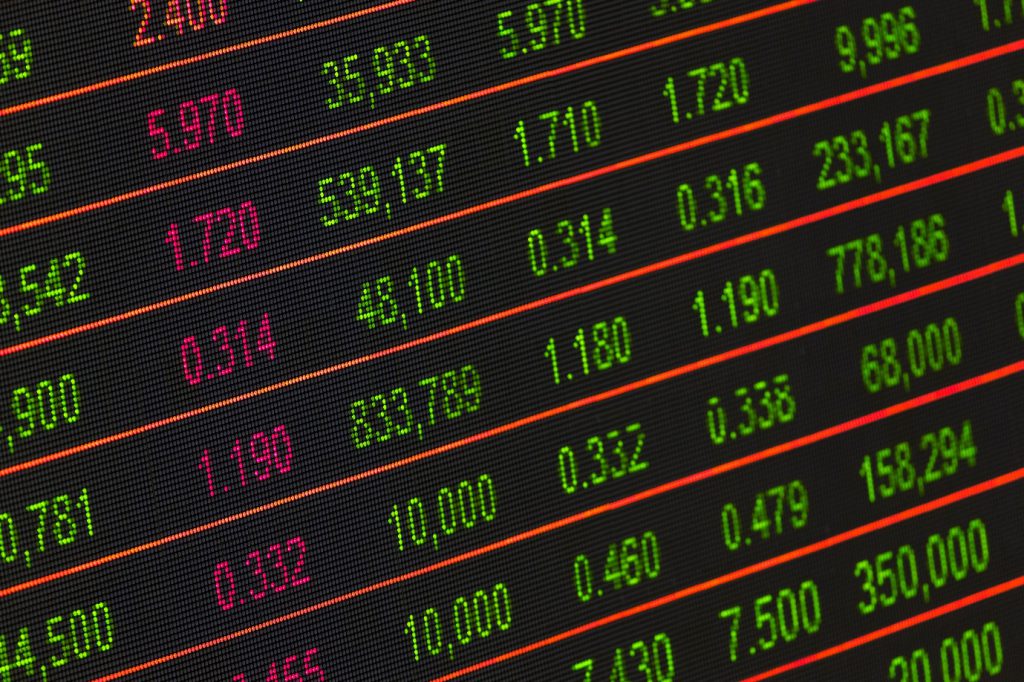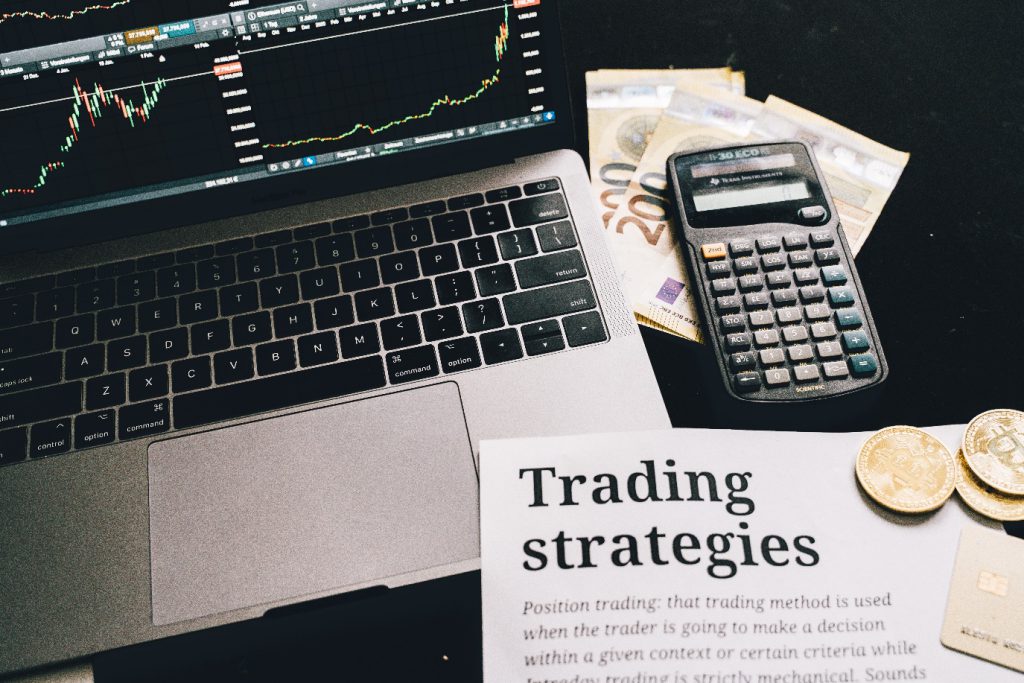Proven Forex Trading Tips for Consistent Profits
Welcome to our comprehensive guide on proven forex trading tips for consistent profits. The foreign exchange market, or forex, is a dynamic and lucrative market where currencies are bought and sold. However, navigating the complexities of forex trading requires a solid understanding of the market, effective strategies, risk management techniques, and emotional discipline. In this article, we will outline essential tips and techniques that can help traders achieve consistent profitability in forex trading. Whether you are a beginner or an experienced trader looking to enhance your trading skills, read on to discover valuable insights and strategies to maximize your chances of success in the forex market.
1. Understanding the Basics of Forex Trading
1.1 What is Forex Trading?
Forex trading, also known as foreign exchange trading, is the buying and selling of currencies in the global marketplace. It is one of the largest and most liquid financial markets, where individuals, institutions, and governments trade currencies for various purposes, including investment, speculation, and hedging against currency risks.
1.2 Market Participants and Major Currency Pairs
In the forex market, there are various participants, such as banks, central banks, corporations, financial institutions, and individual traders. These participants contribute to the high volume and volatility of the market.
When trading forex, traders deal with currency pairs. Major currency pairs, such as EUR/USD (euro against the US dollar), GBP/USD (British pound against the US dollar), and USD/JPY (US dollar against the Japanese yen), are the most actively traded pairs and offer ample trading opportunities.
1.3 How Forex Trading Works
Forex trading involves speculating on the price movements of currency pairs. Traders aim to profit from the fluctuations in exchange rates by buying a currency pair at a lower price and selling it at a higher price, or vice versa.
The forex market operates 24 hours a day, five days a week, allowing traders to take advantage of different time zones and global events that impact currency values. Trading can be done through online platforms provided by brokers, enabling traders to access the market from anywhere in the world.
2. Developing a Solid Trading Strategy
2.1 Setting Clear Goals and Objectives
Before diving into forex trading, it’s crucial to define your goals and objectives. Are you looking for short-term profits or long-term wealth building? Setting clear goals helps you stay focused and make informed trading decisions aligned with your objectives.
2.2 Choosing the Right Trading Style
There are various trading styles in forex, including day trading, swing trading, and position trading. Each style suits different personalities, time availability, and risk tolerance. Choosing the right trading style that aligns with your preferences and lifestyle is essential for consistent profitability.
2.3 Identifying Entry and Exit Points
Identifying entry and exit points is a critical aspect of a trading strategy. Technical analysis tools, such as support and resistance levels, moving averages, and chart patterns, can help determine potential entry and exit points. Combining technical analysis with fundamental analysis, which involves assessing economic indicators and news events, can enhance your decision-making process.
3. Importance of Risk Management in Forex Trading
3.1 Understanding Risk and Reward
Forex trading involves risk, and understanding the relationship between risk and reward is vital. Assessing potential profits against potential losses is crucial for managing risk effectively and avoiding excessive exposure to the market.
3.2 Determining Position Size and Stop Loss Levels
Determining the appropriate position size and placing stop loss levels is essential for protecting your capital. Position size should be based on your risk tolerance and the potential risk of the trade, while stop loss levels help limit losses by automatically closing a trade when a certain price level is reached.
3.3 Implementing Proper Risk Management Techniques
Implementing proper risk management techniques involves diversifying your trades, avoiding overleveraging, and sticking to a predetermined risk-to-reward ratio. By managing risk effectively, you can protect your trading account from substantial losses and ensure longevity in forex trading.
4. Utilizing Technical Analysis Tools for Forex Trading
4.1 Introduction to Technical Analysis
Technical analysis involves using historical price data, patterns, and indicators to predict future price movements. It helps traders identify trends, support and resistance levels, and potential entry and exit points. Technical analysis tools provide valuable insights into the market’s dynamics and can be used to develop effective trading strategies.
4.2 Common Technical Indicators and Oscillators
There is a wide range of technical indicators and oscillators available to traders, such as moving averages, relative strength index (RSI), and stochastic oscillators. These tools can help traders confirm trends, assess overbought or oversold conditions, and generate trading signals.
4.3 Chart Patterns and Trend Analysis
Chart patterns, such as triangles, rectangles, and head and shoulders patterns, can provide valuable information about potential price reversals or continuation patterns. Trend analysis involves identifying the direction of the market and trading in the same direction as the prevailing trend. By combining chart patterns and trend analysis, traders can enhance their probability of success in forex trading.
Remember, forex trading requires patience, discipline, and continuous learning. By understanding the basics, developing a solid trading strategy, managing risk effectively, and utilizing technical analysis tools, you can strive for consistent profits in the exciting world of forex trading. So, grab your caffeine, put on your forex superhero cape, and let’s conquer the currency market!
5. The Role of Fundamental Analysis in Forex Trading
In the world of forex trading, it’s not all about looking at fancy charts and technical indicators. Fundamental analysis plays a crucial role in understanding the forces that drive currency movements. It involves analyzing economic indicators, news releases, central bank decisions, and monetary policies to gain insights into the underlying factors affecting currency values.
5.1 Understanding Economic Indicators and News
Economic indicators such as GDP, inflation rates, employment data, and consumer confidence can have a significant impact on currency values. By keeping an eye on these indicators and staying updated with relevant news releases, traders can anticipate market movements and make informed trading decisions.
5.2 Analyzing Central Bank Decisions and Monetary Policies
Central banks, with their decisions on interest rates and monetary policies, can greatly influence currency values. Traders need to closely follow central bank announcements and understand the implications of policy changes on the forex market. This knowledge can help traders identify profitable trading opportunities and manage their risks effectively.
5.3 Incorporating Fundamental Analysis into Trading Strategies
To achieve consistent profits, it’s essential to combine fundamental analysis with technical analysis. By incorporating fundamental factors into trading strategies, traders can enhance their decision-making process and increase their chances of success. Remember, a well-rounded approach that considers both technical and fundamental aspects is key to long-term profitability in forex trading.
6. Effective Money Management Techniques for Forex Traders
In forex trading, managing your money wisely is just as important as finding profitable trades. Here are some effective money management techniques that can help traders stay on the path to consistent profits.
6.1 Setting Realistic Profit Targets and Risk-Reward Ratios
Setting realistic profit targets and maintaining appropriate risk-reward ratios is crucial for long-term success. By defining your profit targets and risk levels before entering a trade, you can ensure that your trades are aligned with your overall trading strategy and risk tolerance.
6.2 Diversifying Investments and Avoiding Overtrading
Diversification is the key to mitigating risks in forex trading. Instead of putting all your eggs in one currency pair, consider diversifying your investments across multiple pairs. Additionally, avoid the temptation to overtrade. Overtrading can lead to impulsive decisions and increased exposure to unnecessary risks.
6.3 Managing Trading Capital and Balancing Risk
Properly managing your trading capital is crucial for consistent profitability. Avoid risking too much of your capital on a single trade and aim to balance your risk across different trades. By utilizing appropriate position sizing techniques and setting stop-loss orders, you can protect your capital and minimize potential losses.
7. Embracing Emotional Discipline in Forex Trading
Forex trading can be emotionally challenging, but learning to manage your emotions is essential for success. Here are some tips to help you maintain emotional discipline in the world of forex trading.
7.1 Controlling Fear and Greed in Trading
Fear and greed are common emotions that can cloud your judgment and lead to poor decision-making. It’s important to recognize these emotions and control them. Stick to your trading plan, avoid impulsive actions driven by fear or greed, and always trade based on logic and analysis.
7.2 Developing Patience and Consistency
Patience is a virtue in forex trading. It’s important to wait for high-probability trading setups and not rush into trades out of impatience. Consistency is also key. Stick to your trading strategy, avoid making drastic changes based on short-term results, and focus on long-term profitability.
7.3 Managing Emotions during Winning and Losing Streaks
Both winning and losing streaks can evoke strong emotions. During winning streaks, it’s crucial to avoid overconfidence and stick to your trading plan. Similarly, during losing streaks, it’s important not to let frustration or desperation drive your decision-making process. Take breaks, analyze your trades objectively, and make adjustments as necessary.
8. Learning from Mistakes: Continuous Improvement in Forex Trading
Mistakes are part of the learning process in forex trading. Learning from them and continuously improving your trading skills is essential for long-term success.
8.1 Analyzing and Reflecting on Past Trades
To improve, it’s crucial to analyze and reflect on past trades. Identify your strengths and weaknesses, review your trading decisions, and learn from both successful and unsuccessful trades. This self-reflection will help you fine-tune your strategies and make better-informed trading decisions in the future.
Remember, forex trading is a journey that requires continuous learning and adaptation. By incorporating these proven tips into your trading routine and maintaining a disciplined approach, you can increase your chances of achieving consistent profits in the exciting and ever-changing world of forex trading.
By implementing the proven forex trading tips outlined in this article, you can significantly enhance your trading skills and increase your chances of consistent profitability. Remember, forex trading requires continuous learning, adaptability, and disciplined execution. Develop a robust trading strategy, manage your risks effectively, utilize technical and fundamental analysis tools, and maintain emotional discipline throughout your trading journey. Lastly, always learn from your mistakes and seek opportunities for improvement. With dedication and practice, you can become a successful forex trader who consistently achieves profitable results. Start applying these tips today and embark on your path to forex trading success.
Frequently Asked Questions
1. Is forex trading suitable for beginners?
Absolutely! Forex trading can be suitable for beginners as well as experienced traders. However, it is crucial for beginners to take the time to understand the basics, learn trading strategies, and practice in a demo account before trading with real money.
2. How much capital do I need to start forex trading?
The amount of capital required to start forex trading can vary depending on your trading style and risk tolerance. It is generally recommended to start with an amount of money that you can afford to lose without impacting your financial stability. Some brokers offer the option to open trading accounts with small initial deposits.
3. How can I manage the risk in forex trading?
Risk management is crucial in forex trading to protect your capital. Some key risk management techniques include setting stop-loss orders, diversifying your trades, using proper position sizing, and avoiding excessive leverage. It is important to have a clear risk management plan in place and consistently adhere to it.
4. Can I trade forex part-time?
Yes, forex trading can be done on a part-time basis. Many traders engage in forex trading alongside their regular jobs or other commitments. However, it is important to allocate sufficient time for market analysis, monitoring trades, and continuous learning to stay updated with market trends and make informed trading decisions.
365technoblog is a No.1 source for technology related tips and discussions – app, IT security, smartphones, etc. 365technoblog also welcomes guest’s writers.









Comments